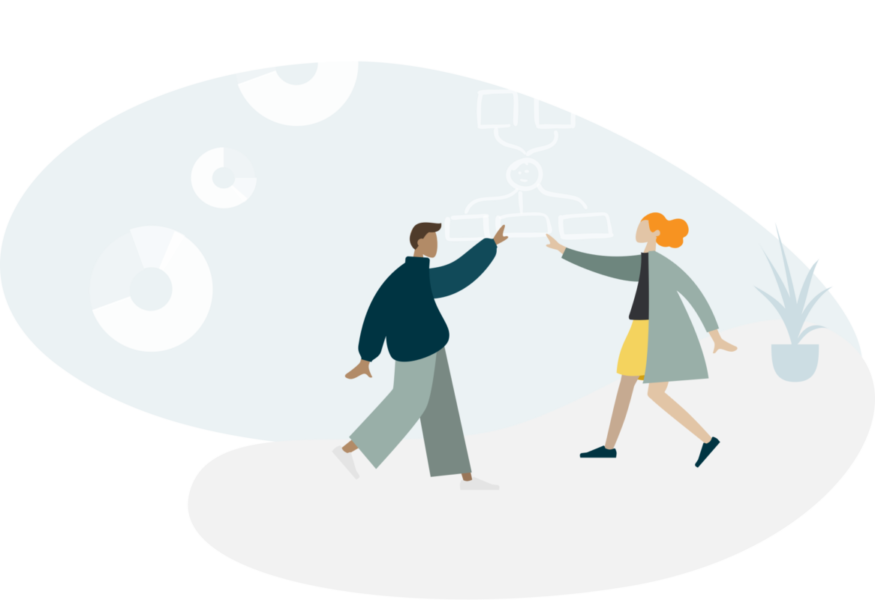XML Web Services Course Overview

The Java Web Services class teaches students how to build Web Services and Web Service clients using Java technologies. The class includes a introduction to XML namespaces, XML Schema, SOAP, and WSDL before exploring Web service client or server-side development in Java APIs and tools. Specifically, this class focuses on JAX-WS.
XML Web Services Training Prerequisite
Students should have a good understanding of the Java programming language and a basic understanding of XML. Students that have attended Core Java and Advanced Java have the necessary background for this course.
XML Web Services Course Objective
Understand how Web services related to Service Oriented Architecture.
Become familiar with the pillar Web service specifications for XML, XML Schema, SOAP, WSDL and UDDI.
Pick up design patterns and best practices for Web service interface documents.
Experience the development of Java Web services using the JAX-WS API.
See how WSDL and Schema elements map to Java objects.
Recognize and understand the difference between RPC and Document styled services.
Learn how to make and test Web services that are highly interoperable
XML Web Services Course Duration
45 Working days, daily one and half hours
XML Web Services Training Content
XML
Introduction to XML
Evolution of XML
Need of xml
Workflow of xml
Fundamentals of XML
Xml Declarations
Elements
Comments
Processing instructions
Doctype declarations
Entities
Namespaces
Realtime Examples with scenarios
Document Type Definition’s (DTD’s)
Validation
Element & Attributes
Entities
Realtime Examples with scenarios
Xml Schema Definition(XSD)
About XSD
Difference between XSD & DTD
Schema Declarations
Data types
Element declarations
Complex type declarations
Complex Content
Simple Type Declarations
Real-time Examples with scenarios
About Parser
Need of parser
Types of parsers
Parsing approaches
Real-time Examples with scenarios
Schema Validation
About schema validation api’s
JAXP DOM Parser
JAXP SAX Parser
JAXP Validation API
Realtime Examples with scenarios

About XPath
Need of XPath
XPath Expressions
Difference between XPath & DOM API
JAXP XPath API
JDOM XPath API
Realtime Examples with scenarios
About XSLT
XSLT vs XML
XSLT basics
JAXP Transformation API
Realtime Examples with scenarios
XML Object Bindings
The need of object binding
JAXB API(Covers 2.0)
About Marshalling & Unmarshalling
Binding with XML beans
Real-time Examples with scenarios
Web Services
About Web Services
Introduction
SOA Architecture Principles
Types of web services
About REST Web Service
Introduction
Rest principles & Terminology
About JAX-RS API
Annotation Inheritance with REST
REST Client Design Scenarios
REST Service Endpoint & URL Design Scenarios
Realtime Examples with scenarios
About SOAP Web Service
Introduction
Anatomy of SOAP
Structure of SOAP
SOAP with HTTP
SOAP-1.2 Features
About SAAJ
Introduction
Creating a SOAP Message
Retrieving SOAP Message
Sending SOAP Message
Adding attachments to SOAP Message
About WSDL
Introduction
WSDL Structure (Covers 2.0)
Message Exchanging Design Patterns & Modes
About JAX-WS API
Introduction
Fundamentals of JAX-WS
Web Service meta data annotations
XML Generation using JAXB Annotations
JAX-WS Annotations
Realtime Examples with scenarios
About Web services Security
Introduction
Need of security
Types of securities
Real time Examples with scenarios
About Apache-CXF
Introduction
High level architecture
Real time Examples with scenarios
About Apache-AXIS
Introduction
High level architecture
Realtime Examples with scenarios
Course Highlights: –
All examples are covered with real time scenarios
Covers development with Eclipse & NetBeans IDE’s
Web services testing and monitoring tools

Web services is a standardized way or medium to propagate communication between the client and server applications on the World Wide Web. This course will give a detailed insight into various components of web services like SOAP,WSDL, REST, and how they operate.
What Should I Know?
This course is designed for beginners having basic knowledge of web services protocols and SOA (Service Oriented Architecture) principles.
What is Web Service?
Web service is a standardized medium to propagate communication between the client and server applications on the World Wide Web.
Web services provide a common platform that allows multiple applications built on various programming languages to have the ability to communicate with each other
Popular Web Services Protocols are:
SOAP:
SOAP is known as the Simple Object Access Protocol.
SOAP was developed as an intermediate language so that applications built on various programming languages could talk quickly to each other and avoid the extreme development effort.
WSDL:
WSDL is known as the Web Services Description Language(WSDL).
WSDL is an XML-based file which tells the client application what the web service does and gives all the information required to connect to the web service.
REST:
REST stands for REpresentational State Transfer.
REST is used to build Web services that are lightweight, maintainable, and scalable.
A web service is any piece of software that makes itself available over the internet and uses a standardized XML messaging system. XML is used to encode all communications to a web service. For example, a client invokes a web service by sending an XML message, then waits for a corresponding XML response. As all communication is in XML, web services are not tied to any one operating system or programming language—Java can talk with Perl; Windows applications can talk with Unix applications.
Web services are self-contained, modular, distributed, dynamic applications that can be described, published, located, or invoked over the network to create products, processes, and supply chains. These applications can be local, distributed, or web-based. Web services are built on top of open standards such as TCP/IP, HTTP, Java, HTML, and XML.
Web services are XML-based information exchange systems that use the Internet for direct application-to-application interaction. These systems can include programs, objects, messages, or documents.
A web service is a collection of open protocols and standards used for exchanging data between applications or systems. Software applications written in various programming languages and running on various platforms can use web services to exchange data over computer networks like the Internet in a manner similar to inter-process communication on a single computer. This interoperability (e.g., between Java and Python, or Windows and Linux applications) is due to the use of open standards.

To summarize, a complete web service is, therefore, any service that −
Is available over the Internet or private (intranet) networks
Uses a standardized XML messaging system
Is not tied to any one operating system or programming language
Is self-describing via a common XML grammar
Is discoverable via a simple find mechanism
Components of Web Services
The basic web services platform is XML + HTTP. All the standard web services work using the following components −
SOAP (Simple Object Access Protocol)
UDDI (Universal Description, Discovery and Integration)
WSDL (Web Services Description Language)
All these components have been discussed in the Web Services Architecture chapter.
How Does a Web Service Work?
A web service enables communication among various applications by using open standards such as HTML, XML, WSDL, and SOAP. A web service takes the help of −
XML to tag the data
SOAP to transfer a message
WSDL to describe the availability of service.
You can build a Java-based web service on Solaris that is accessible from your Visual Basic program that runs on Windows.
You can also use C# to build new web services on Windows that can be invoked from your web application that is based on JavaServer Pages (JSP) and runs on Linux.
Example
Consider a simple account-management and order processing system. The accounting personnel use a client application built with Visual Basic or JSP to create new accounts and enter new customer orders.
The processing logic for this system is written in Java and resides on a Solaris machine, which also interacts with a database to store information.
The steps to perform this operation are as follows −
The client program bundles the account registration information into a SOAP message.
This SOAP message is sent to the web service as the body of an HTTP POST request.
The web service unpacks the SOAP request and converts it into a command that the application can understand.

The application processes the information as required and responds with a new unique account number for that customer.
Next, the web service packages the response into another SOAP message, which it sends back to the client program in response to its HTTP request.
The client program unpacks the SOAP message to obtain the results of the account registration process.
Web Services tutorial is designed for beginners and professionals providing basic and advanced concepts of web services such as protocols, SOAP, RESTful, java web service implementation, JAX-WS and JAX-RS tutorials and examples.
Web service is a technology to communicate one programming language with another. For example, java programming language can interact with PHP and .Net by using web services. In other words, web service provides a way to achieve interoperability.
Java Web Services Tutorial
In this tutorial, you will be able to learn java web services and its specifications such as JAX-WS and JAX-RS.
There are two ways to write the code for JAX-WS by RPC style and Document style. Like JAX-WS, JAX-RS can be written by Jersey and RESTeasy. We will learn all these technologies later.
Why choose us Coding Trainings
1. Having More Than 15 Years Of Experience In Medical Coding Training
2. 13+ Years Of Experience In Real-Time Industry
3. 100% Lab Facility For Every Student By Experienced Lab Coordinators
4. Training On Live Projects And Assignments
5. 100% Placement Assistance
6. Lifetime Access To Latest Content
7. 24 X 7 Trainer’s Support On Online Forum
8. Giving Credits For Real Time Internship
9. Get Full Access To Paid SEO Tools
10. Become A Certified Professional
How much Does Medical Coding Training Fees Hyderabad
Fees for Medical coding 6,000+ only if ur Looking for All training 12,000+ Classroom training and internship training with live projects
S Nandini reddy
★★★★★ 1 days ago
Best institute from recent times to learn CPC with live projects Nice
Reply Like
shiva bkb
★★★★★ 8 days ago
Well experienced faculty for medical coding highly recommended for training
Reply Like
javeed ahmed
